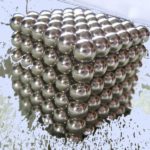Teschler on Topic
Leland Teschler • Executive Editor
[email protected]
On Twitter @ DW_LeeTeschler
The recent round of tariffs on $300 billion-worth of imports from China rocked markets because it will mostly target popular consumer products such as cellphones, laptops, apparel, and toys. Unfortunately, the politics of tariffs can obscure the rationale underlying tariff wars: the need for a strong domestic manufacturing base. To really understand that rationale, it is good to consult a non-political source.
A few years ago, MIT professor Suzanne Doris Berger penned How We Compete, summarizing the results of a five-year study by the MIT Industrial Performance Center. The study looked over 500 international companies to figure out what business practices are succeeding today.
Berger says there is no question Chinese imports led to a drop in U.S. manufacturing jobs. Chinese imports accounted for about 33% of manufacturing job declines between 1990 and 2000 and 55% between 2000 and 2007. And the deck is stacked against entrepreneurs with ideas for new manufacturing companies but no money. Venture capital is strongly concentrated in IT and telecom where firms can scale up relatively quickly, Berger says. VC investors are less likely to invest in areas where it takes longer to develop products. As one CEO in the study put it, “The VC model does not work for manufacturing companies. VCs cannot make any money on something that costs $100 million and takes at least 10 years to build.”
It’s also evident that companies are more likely to lose their technological edge when they develop technology in the U.S. but chose to manufacture it elsewhere. The process by which technology scales from pilot to commercial production creates opportunities for learning by building, says Berger. When the learning takes place outside the U.S., it is likely to lead to innovations outside the U.S. as well.
Berger says the phenomenon manifested itself in the R&D trajectories of U.S. optoelectronics firms, some of which moved production overseas. Within a few years, the technological paths of those remaining in the U.S. diverged from those that had moved offshore. New optoelectronics technologies that integrated functions on a single IC flourished only in the firms staying in the U.S. Those that had moved production were generally stuck optimizing the discrete chips of the previous generation.
Though high-tech manufacturing gets headlines, medium-low-tech manufacturing firms account for almost eight times more value added in production. Berger likens them to the weight-bearing foundations of the U.S. economy. It turns out that many of these manufacturing firms are integral to U.S. innovation, but not in ways that can be measured in terms of patents and high-profile products.
Instead, superior performance seems to come from collocation, Berger says. Proximity to other firms and suppliers helps innovators handle problems that take special skill sets, unfamiliar equipment, and different kinds of experience. She explains that being across the street from suppliers was critical during the early years of manufacturing companies as they moved their ideas toward prototypes and into pilot production.
Specific instances illustrate these effects. An example is the contrast between Raleigh-Durham and Greenville, N.C. Both places host pharmaceutical companies. But Raleigh-Durham also hosts related industries such as medical devices and is the home of universities and community colleges with research programs. With these additional resources nearby, Berger thinks it’s no surprise that Raleigh-Durham employment growth in pharmaceutical industries far outstrips that of Greenville.
And that is the goal of adding tariffs to imports. The complementary activities that can produce high rates of growth and job creation can only happen if those activities take place here. That’s something to keep in mind if you find yourself paying a little more for your next cellphone. DW
You may also like:
Filed Under: NEWS • PROFILES • EDITORIALS, Commentaries • insights • Technical thinking, MANUFACTURING








